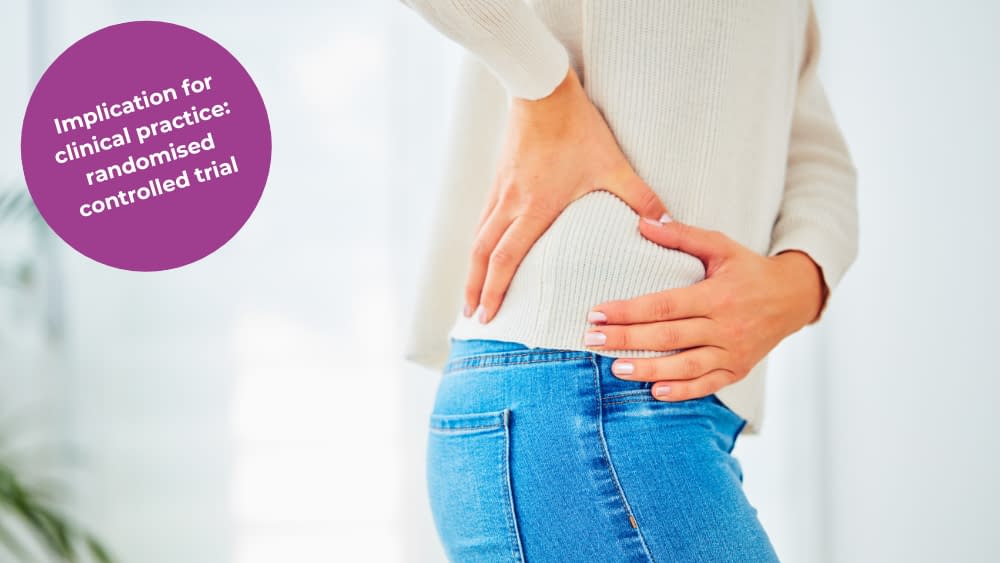How hip pain diagnosis is communicated and impacts on a patient’s belief on subsequent management.
Context
Clinicians are advised to avoid terminology like ‘degeneration’, ‘wear and tear’, and ‘bone on bone’ and to consider diagnosing using contemporary explanations within a biopsychosocial framework. This study looks to compare the effects of diagnostic labels and their explanations on people’s beliefs about managing hip pain.
Methods
Participants aged ≥45 years with and without hip pain were randomised to receive a diagnostic label and explanation of:
(1) Hip osteoarthritis (with contemporary OA explanation)
(2) Persistent hip pain (with biopsychosocial pain explanation)
(3) Hip degeneration (with wear and tear explanation)
Primary outcomes were the beliefs:
(1) Exercise would damage the hip
(2) Surgery is necessary at some stage
Secondary outcomes included beliefs about other treatments and care providers.
Results
- Compared to hip degeneration, participants who were allocated to hip osteoarthritis and persistent hip pain believed exercise was less damaging, respectively and surgery less necessary.
- Compared to hip osteoarthritis, participants who were allocated to persistent hip pain believed surgery was less necessary, but not that exercise was less damaging.
- Compared to hip degeneration, participants who were allocated to hip osteoarthritis and persistent hip pain were less concerned about their hip. They believed exercise and care from an exercise and sports physician, rheumatologist, or physiotherapist would be more helpful, and care from an orthopaedic surgeon less helpful.




